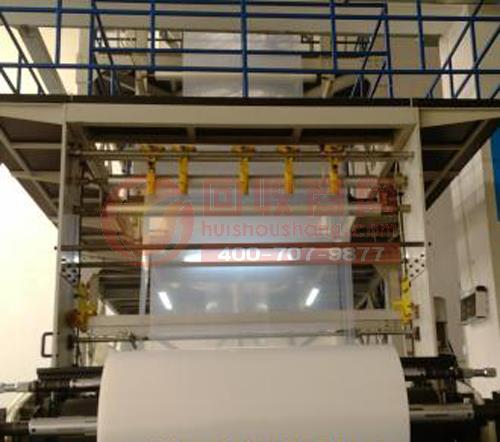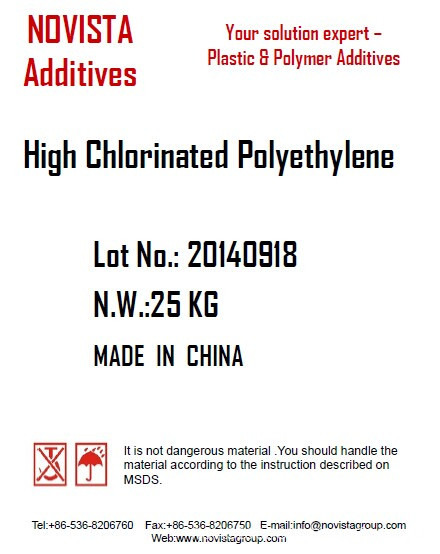First, the film is too sticky and has poor opening analysis: 1. The resin material type is incorrect, not the blown film grade polyethylene resin particles, and the content of the opener or the opener is not low; 2. The temperature of the molten resin is too high and the fluidity is too large; 3. The inflation ratio is too large, resulting in poor opening of the film; 4. The traction speed is too fast. Solution: 1. Replace the resin raw materials, or add a certain amount of opening agent to the department; 2. Properly reduce the extrusion temperature and the temperature of the resin; 3. Appropriately reduce the inflation ratio; 4. Appropriately reduce the traction speed. Second, the film transparency is poor analysis: 1. The extrusion temperature is low, and the resin is poorly plasticized, resulting in poor transparency of the film after blow molding; 2. The inflation ratio is too small; 3, the cooling effect is not good, thus affecting the transparency of the film; 4. The moisture content in the resin raw material is too large; 5, the traction speed is too fast, the film cooling is insufficient. Solution: 1. Appropriately increase the extrusion temperature so that the resin can be uniformly plasticized; 2. Appropriately increase the inflation ratio; 3. Increase the air volume and improve the cooling effect; 4. Drying the raw materials; 5. Appropriately reduce the traction speed. Third, the film has a foggy water pattern analysis: 1. The extrusion temperature is low and the resin is poorly plasticized; 2. The resin is damp and the moisture content is too high. Solution: 1. Adjust the temperature setting of the extruder and increase the extrusion temperature appropriately; 2. Drying the resin raw material generally requires that the water content of the resin should not exceed 0.3%. Fourth, the film thickness is uneven analysis: 1. The uniformity of the die gap directly affects the uniformity of the thickness of the film. If the gap of the die is not uniform, the gap between the parts is larger, and the gap between the parts is smaller, resulting in more or less extrusion. The thickness of the formed film is also inconsistent, some parts are thin, and some parts are thick; 2. The temperature distribution of the die is not uniform, and there are high and low, so that the film after blow molding is thin and uneven; 3. The air supply volume around the cooling air ring is inconsistent, resulting in uneven cooling effect, resulting in uneven thickness of the film; 4. The inflation ratio and the traction ratio are not suitable, so that the bubble thickness is not easy to control; 5, the traction speed is not constant, constantly changing, which of course will affect the thickness of the film. Solution: 1. Adjust the gap between the die heads to ensure uniformity everywhere; 2. Adjust the temperature of the die head to make the temperature of the die part uniform; 3. Adjust the cooling device to ensure that the air outlet of the air outlet is even; 4. Adjust the inflation ratio and the traction ratio; 5. Check the mechanical transmission to keep the traction speed constant. Fifth, the thickness of the film is thick analysis: 1. The air volume of the cooling air ring is too large, and the film cools too fast; 2. The traction speed is too slow. Solution: 1. Adjust the die gap; 2. Appropriately increase the traction speed. Sixth, the thickness of the film is thin analysis: 1. The die gap is too small, the resistance is too large, so the film thickness is thin; 2. The air volume of the cooling air ring is too small, and the film cooling is too slow; 3. The pulling speed is too fast, and the film is stretched excessively, so that the thickness is thinned. Solution: 1. Adjust the die gap; 2. Appropriately increase the air volume of the wind ring to accelerate the cooling of the film; 3. Appropriately reduce the traction speed. Seven, the film has poor heat sealability analysis: 1. The dew point is too low, and the polymer molecules are oriented, so that the performance of the film is close to the oriented film, resulting in a decrease in heat sealing performance; 2. The inflation ratio and the traction ratio are not appropriate (too large), and the film is stretched and oriented, thereby affecting the heat sealing performance of the film. Solution: 1. Adjust the amount of wind in the wind ring to make the dew point higher, and inflate and pull as much as possible under the melting point of the plastic to reduce the molecular stretching orientation caused by inflation and traction; 2. The inflation ratio and the traction ratio should be appropriately small. If the inflation ratio is too large and the traction speed is too fast, the transverse and longitudinal stretching of the film is excessive, then the performance of the film tends to be biaxially stretched. The heat sealability will be worse. Eight, the film transverse tensile strength difference analysis: 1. The pulling speed is too fast, and the difference between the inflation ratio is too large, so that the longitudinal direction is fibrillated, and the lateral strength is deteriorated; 2. The cooling rate of the cooling air ring is too slow. Solution: 1. Appropriately reduce the traction speed to match the inflation ratio; 2. Increase the air circulation volume to make the inflation film cool rapidly, and avoid being stretched and oriented at a high temperature and high elastic state. Nine, the film surface is rough, uneven analysis: 1. The extrusion temperature is too low and the resin is poorly plasticized; 2. The extrusion speed is too fast. Solution: 1. Adjust the temperature setting of the extrusion and increase the extrusion temperature appropriately to ensure good plasticization of the resin; 2. Properly reduce the extrusion speed. Ten, the film has odor analysis: 1. The resin raw material itself has an odor; 2. The extrusion temperature of the molten resin is too high, causing the resin to decompose, thereby generating an odor; 3. The bubble cooling is insufficient, and the hot air in the bubble is not removed. Solution: 1. Replace the resin raw materials; 2. Adjust the extrusion temperature; 3. Improve the cooling efficiency of the cooling air ring to fully cool the bubble.
High chlorinated Polyethylene Super - HCPE
Molecular Formula: [CH2-CHCl-CH2-CH2] n
EINECS No.: 208-407-7
CAS NO. : 63231-66-3
HCPE is a type of Chlorinated Polymer which contains chlorine at 65-69%. It is transparent, hard and brittle thermoplastic resins. It has high chemical stability, good salt water resistance and good ultraviolet resistance. It is readily soluble in organic solvents such as toluene, xylene and esters, forming a colorless to pale yellow, transparent solution. When this solution is applied to the surface of metal, concrete, paper etc., the solvent readily vaporizes at room temperature to leave a transparent, hard and lustrous glass-like film. This film resists the permeation of moisture and oxygen gas, and shows high resistance to various chemicals such as acids and alkalis. It protects the substrates from corrosion, and also serves as a top coating for decorative purposes.
HCPE can be used as gravure printing ink, the binder of heavy-duty anticorrosion paint, waterproof paint and the component of adhesives. Particularly, due to its high corrosive resistance to Cl-, it is especially suitable for being used on vessels, docks, containers coating. The paint made of HCPE can be used in chemical equipment, oil field pipelines, offshore facilities, ship coatings, metallurgy and mine, salt industry, fishing ground, wastes treatment, transportation facilities, container and electrical equipment. High molecular weight HCPE grades such as NVH -60 and NVH -120 are our unique products which are developed for all kinds adhesive for PVC pipe, pipe fittings, plates, sheets etc.
NV series are produced by our newly invented hydrochloric acid phase technology, in which no organic solvent such as carbon tetrachloride is involved, resulting no destruction to ozone layer and no harm to the operators health.
High Chlorinated Polyethylene HCPE, High Chlorinated Polyethylene, High Concentration Chlorinated Polyethylene Shandong Novista Chemicals Co.,Ltd (Novista Group) , https://www.novistachem.com
